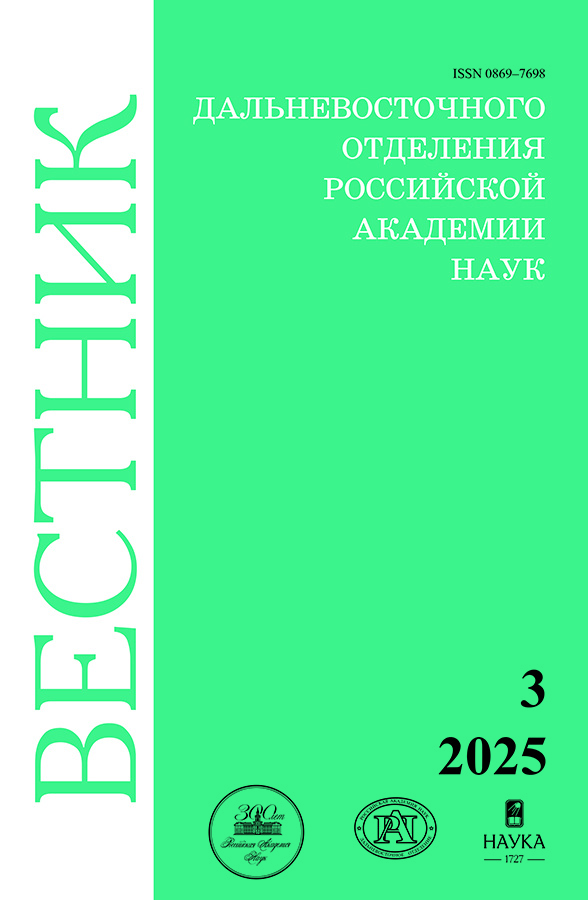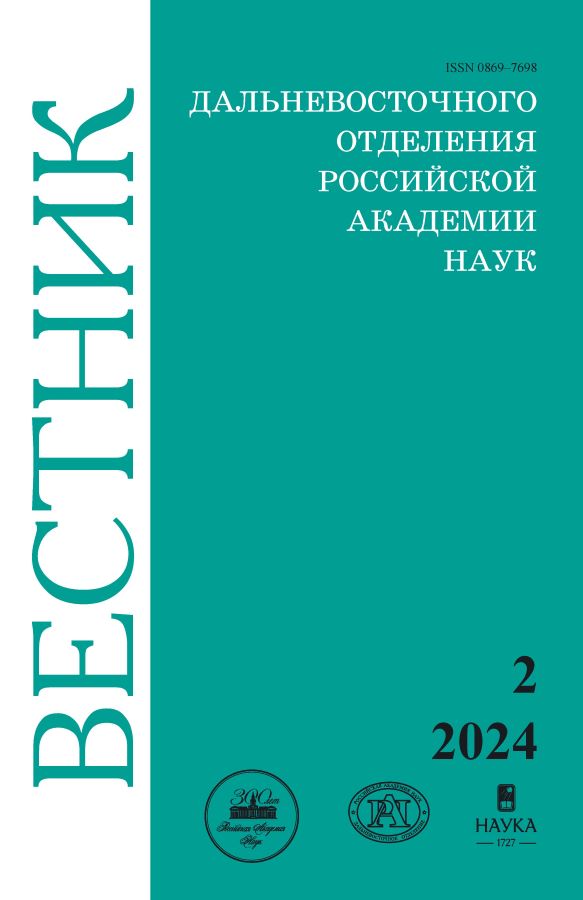Проблема антибиотикорезистентности. Вторичные метаболиты растений: антибактериальные свойства и перспективы применения
- Авторы: Еркин А.А.1
-
Учреждения:
- Оренбургский государственный университет
- Выпуск: № 2 (2024)
- Страницы: 199-212
- Раздел: Химические науки
- URL: https://permmedjournal.ru/0869-7698/article/view/676109
- DOI: https://doi.org/10.31857/S0869769824020179
- EDN: https://elibrary.ru/lbzlqk
- ID: 676109
Цитировать
Полный текст
Аннотация
Рассматривается проблема антибиотикорезистентности в мире и причины ее возникновения, а также способы преодоления данной проблемы. Одним из способов является применение вторичных метаболитов растений, обладающих антибактериальными свойствами. Работа включает обзор большого количества исследований, посвященных механизмам действия антибактериальных свойств вторичных метаболитов на бактериальные клетки и возможности их комбинирования с различными антибиотиками для аккумулирования бактерицидного и бактериостатического эффекта и преодоления проблемы резистентности микроорганизмов к антибиотикам.
Полный текст
Об авторах
Аскар Арманулы Еркин
Оренбургский государственный университет
Автор, ответственный за переписку.
Email: askartlegenov12@gmail.com
ORCID iD: 0000-0003-3495-1608
магистрант
Россия, ОренбургСписок литературы
- Christopher J. L., Murray K., Shunji I., Fablina Sh., Swetschinski L., Aguilar G. R., Gray A. Global burden of bacterial antimicrobial resistance in 2019: a systematic analysis // Lancet. 2022. Vol. 399. P. 629–655.
- Review on antimicrobial resistance 2016. URL: https://amr-review.org/sites/default/files/160518_Final%20paper_with%20cover.pdf (дата обращения: 09.10.2023).
- Review on antimicrobial resistance 2014. URL: https://amr-review.org/sites/default/files/AMR%20Review%20Paper%20-%20Tackling%20a%20crisis%20for%20the%20health%20and%20wealth%20of%20nations_1.pd (дата обращения: 09.10.2023).
- Zuk M., Dorotkiewicz-Jach A., Drulis-Kawa Z. Bactericidal activities of GM flax seedcake extract on pathogenic bacteria clinical strains. // BMC Biotechnol. 2020. N14. P. 70–75.
- Antibiotic resistance threats in the United States / US Department of Health and Human Services; US Centers for Disease Control and Prevention. 2019. N12. P. 148–152.
- Prestinaci F., Pezzotti P., Pantosti A. Antimicrobial resistance: a global multifaceted phenomenon // Pathog. Glob. Health. 2018. Vol. 109 (7). P. 309–318.
- WHO. Global action plan on antimicrobial resistance 2015. URL: https://www.who.int/ru/publications/i/item/9789241509763 (дата обращения: 10.10.2023).
- Naylor N. R., Atun R., Zhu N. et al. Estimating the burden of antimicrobial resistance: a systematic literature review // Antimicrob. Resist. Infect. Control. 2018. N25. P. 7–58.
- CassiniA., Högberg L. D., Plachouras D.et al. Attributable deaths and disability-adjusted life-years caused by infections with antibiotic-resistant bacteria in the EU and the European Economic Area in 2015: a population-level modelling analysis // Lancet Infect. Dis. 2019. Vol. 19 (1). P. 56–66.
- Lim Ch., Takahashi E., Hongsuwan M. et al. Epidemiology and burden of multidrug-resistant bacterial infection in a developing country // Elife. 2016. Vol. 5. P. 518–582.
- Temkin E., Fallach N., Almagor J. et al. Estimating the number of infections caused by antibiotic-resistant Escherichia coli and Klebsiella pneumoniae in 2014: a modelling study // Lancet Glob. Health. 2018. Vol. 6. P. 969–979.
- Rudd K. E., Johnson S. C., Agesa K. H. et al. Global, regional, and national sepsis incidence and mortality, 1990–2017: analysis for the Global Burden of Disease Study // Lancet. 2020. Vol. 395. P. 200–211.
- Ge M., Chen Z., Russell H., Onishi H. R., Kohler J., Silver L. Vancomycin derivatives that inhibit peptidoglycan biosynthesis without binding D-Ala-D-Ala // Science. 1999. Vol. 284. P. 507–511.
- Olaitan A. O. Mechanisms of polymyxin resistance: acquired and intrinsic resistance in bacteria // Front. Microbiol. 2022. N26. P. 605–643.
- Moffatt J. H., Harper M., Harrison P., Hale J. D., Vinogradov E. Colistin resistance in A. baumannii is mediated by complete loss of lipopolysaccharide production // Antimicrob. Agents Chemother. 2018. N54. Р. 4971–4977.
- Eliopoulos G. M. Quinolone resistance mechanisms in pneumococci // Clin. Infect. Dis. 2020. N15. P. 350–356. doi: 10.1086/428052.
- Hooper D. C., Jacoby G. A. Mechanisms of drug resistance: quinolone resistance // Ann. N. Y. Acad. Sci. 2018. Vol. 1354. P. 12–31.
- Jacoby G. A. Mechanisms of resistance to quinolones // Clin. Infect. Dis. 2005. N15. P. 120–126.
- Hooper D. C., Jacoby G. A. Topoisomerase inhibitors: Fluoroquinolone mechanisms of action and resistance // Cold Spring Harb. Perspect. Med. 2016. Vol. 6 (9). a025320.
- Sheed K. A., Phelan J. E. Characterization of rifampicin-resistant Mycobacterium tuberculosis in Khyber Pakhtunkhwa // Sci. Rep. 2021. Vol. 11 (1). P. 141–194.
- Campbell E. A. Structural mechanism for rifampicin inhibition of bacterial RNA polymerase // Cell. 2022. Vol. 104 (6). Р. 901–912.
- Koch A., Mizrahi V., Warner D. F. The impact of drug resistance on Mycobacterium tuberculosis physiology: what can we learn from rifampicin? // Emerg. Microbes Infect. 2014. Vol. 3 (3). P. 17–25.
- Zaw M. T., Emran N. A., Lin Z. Mutations inside rifampicin-resistance determining region of rpoB gene associated with rifampicin-resistance in Mycobacterium tuberculosis // J. Infect. Public. Health. 2018. Vol. 11 (5). P. 605–610.
- Zampieri M. The genetic underground of antibiotic resistance // Science. 2021. N371. P. 783–784.
- Daoud Z., Kourani M., Saab R. et al. Resistance of Streptococcus pneumoniae isolated from Lebanese patients between 2005 and 2009 // Rev. Esp. Quimioter. 2020. Vol. 24 (2). P. 84–90.
- Chen H., Wang X., Yin Y. et al. Molecular characteristics of oxazolidinone resistance in enterococci from a multicenter study in China // BMC Microbiol. 2019. Vol. 19 (1). P. 162.
- Konovalova A., Kahne D., Silhavy Th. Outer membrane biogenesis // Annu. Rev. Microbiol. 2017. N71. P. 539–556.
- Mickiewicz K. M., Yoshikazu K., Drage L. et al. Possible role of L-form switching in recurrent urinary tract infection // Nat. Com. 2019. Vol. 10 (1). 4379.
- Greene N. P., Kaplan E., Crow A., Koronakis V. Antibiotic resistance mediated by the MacB ABC transporter family: A structural and functional perspective // Front. Microbiol. 2018. N9. P. 950.
- Studemeister A. E., Quinn J. P. Selective imipenem resistance in Pseudomonas aeruginosa associated with diminished outer membrane permeability // Antimicrob. Agents Chemother. 2018. Vol. 32 (8). P. 1267–1268.
- Kornelsen V., Kumar A. Update on multidrug resistance efflux pumps in Acinetobacter spp. // Antimicrob. Agents Chemother. 2021. Vol. 65 (7). P. 514–521.
- Raskin I., Ribnicky D., Komarnytsky S. et al. Plants and human health in the twenty-first century // Trends Biotechnol. 2002. Vol. 20 (12). P. 522–531.
- Hikal D. Antibacterial activity of piperine and black pepper oil // Biosci. Biotechn. Res. Asia. 2018. Vol. 15 (4). P. 877–880.
- Khameneh B., Iranshahy M., Ghandadi M. et al. Investigation of the antibacterial activity and efflux pump inhibitory effect of co-loaded piperine and gentamicin nanoliposomes in methicillin-resistant Staphylococcus aureus // Drug Dev. Ind. Pharm. 2015. Vol. 41 (6). P. 989–994.
- Mgbeahuruike E. E. et al. Antimicrobial and synergistic effects of commercial piperine and piperlongumine in combination with conventional antimicrobials // Antibiotics (Basel). 2019. Vol. 8 (2). P. 55.
- Nagendran Tharmalingam, Sa-Hyun Kim, Min Parket al. Inhibitory effect of piperine on Helicobacter pylori growth and adhesion to gastric adenocarcinoma cells // Infect. Agent. Cancer. 2014. Vol. 9 (1). P. 43–45.
- Amit Kumar Tripathi, Anup Kumar Ray, Sunil Kumar Mishra. Molecular and pharmacological aspects of piperine as a potential molecule for disease prevention and management: evidence from clinical trials // Beni-Suef Univ. J. Basic. Appl. Sci. 2022. Vol. 11 (1). P. 16.
- Somma A., Canè C., Rotondo N. et al. A comparative study of the inhibitory action of berberine derivatives on the recombinant protein FtsZ of E. coli // Int. J. Mol. Sci. 2023. Vol. 24 (6). P 5674.
- Soltani R., Fazeli H. et al.Evaluation of the synergistic effect of Tomatidine with several antibiotics against standard and clinical isolates of Staphylococcus aureus, Enterococcus faecalis, Pseudomonas aeruginosa and Escherichia coli. // Iran J. Pharm. Res. 2017. Vol. 16 (1). P. 290–296.
- Siriyong T. Conessine, as resistance-modifying agents against extensively drug-resistant Acinetobacter baumannii // Microb. Drug Resist. 2022. N22. P. 273–282.
- Jeong Yoon Kim, Ju Yeon Kim, Jae Yeon Park et al. Synergistic bactericidal effects of carvone and β-lactams against Xanthomonas campestris pv. vesicatoria // Appl. Biol. Chem. 2023. N66. P. 45–58.
- Althunibat O. Y., Qaralleh H., Al-Dalin S.Y.A. et al. Effect of thymol and carvacrol, the major components of Thymus capitatus on the growth of Pseudomonas aeruginosa // J. Pure Appl. Microbiol. 2016. N10. P. 367–374.
- Klancnik A., Sikic M., Smole M. S. Jejuni planktonic and biofilm cells, mediated via the CmeABC efflux pump // J. Appl. Microbiol. 2017. N122. P. 65–77.
- Vestergaard M. Antibacterial and antifungal properties of resveratrol // Int. J. Antimicrob. Agents. 2019. N53. P .716–723.
- Hotra A., Manuel S., Biucovic G. et al. Deletion of a unique loop in the mycobacterial F-ATP synthase γ subunit sheds light on its inhibitory role in ATP hydrolysis-driven H+ pumping // FEBS J. 2016. Vol. 283 (10). P. 1947–1961.
- Zou D., Xie K., Wang H., Chen Y., Xie M. Inhibitory effects of Biochanin A on the efflux pump of methicillin-resistant Staphylococcus aureus (MRSA) // Wei Sheng Wu Xue Bao. 2014. Vol. 54 (10). P. 1204–1211.
- Kai-Xuan Hu, Xin-Chi Shi, Dong Xu et al. Antibacterial mechanism of Biochanin A and its efficacy for the control of Xanthomonas axonopodis pv. glycines in soybean // Pest Manag. Sci. 2021. Vol. 77 (4). P. 1668–1673.
- Hanski L., Genina N., Uvell H. et al. Inhibitory activity of the isoflavone Biochanin A on intracellular bacteria of genus Chlamydia and initial development of a buccal formulation // PLoS ONE. 2014. Vol. 9 (12). e115115.
- Holler J. G., Christensen S. B., Slotved H. C. et al. Novel inhibitory activity of the Staphylococcus aureus NorA efflux pump by a kaempferol rhamnoside isolated from Persea lingue Nees // J. Antimicrob. Chemother. 2012. Vol. 67 (5). P. 1138–1144.
Дополнительные файлы










